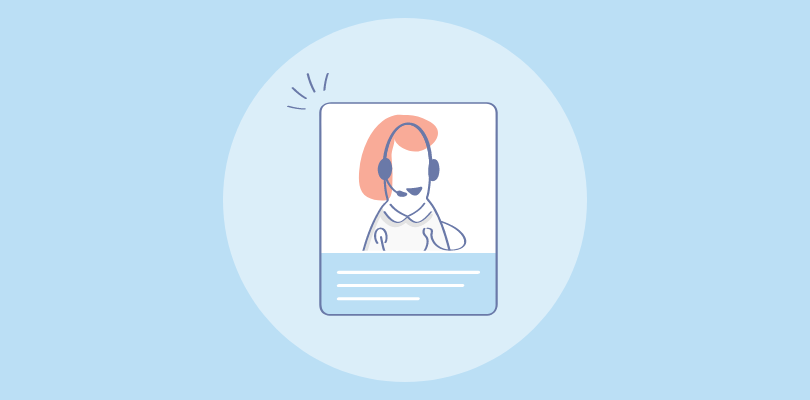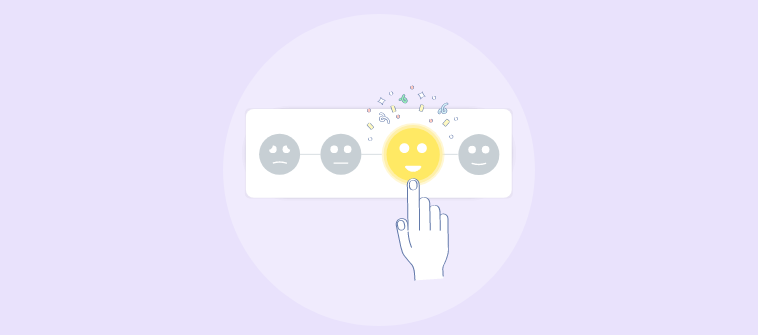A good business sense demands you to treat every person as a customer, even if they are just window shopping or casually checking out products on your website.
You should make them feel welcome, giving them enough attention so that they can at least feel inclined to spend some time at your marketplace. In your life as a businessman, you are bound to encounter a variety of customers, right from someone casually navigating your website to a customer who may have developed an affinity towards your brand.
Varied customers bring up a variety of issues. It’s natural. Questions, doubts, and complaints are a part of the overall interaction between a business and its customers.
Do You Wonder What Is the Best Strategy to Resolve Customer Complaints?
Any query is supposed to be resolved as it is, without any bias, discrimination, and prejudice, but it is good to know your customer and how deeply invested they are in your brand. This kind of approach can allow businesses to resolve customer complaints accordingly, go that extra mile when needed, and customize future communication.
Especially in online businesses, exercising extra caution while communicating with the customers, is always a good idea. When you do not see their faces and hear their voices as often, the only way to understand the mood and the tone of customer interaction is by analyzing how communication is developing.
Types of customers you can expect to encounter in your business
- Prospective customers: The curious ones
- New customers: Are like fresh recruits
- Impulsive or Spontaneous customers: Looking for a good and quick buying experience
- Discount customers: Usually looking for a deal
- Loyal customers: the ones who regularly come to you, and the ones you need to worry about the most
Prospective Customers: The curious ones
These are your potential customers – the ones looking to buy a particular product but haven’t necessarily narrowed it down to a brand yet. Expect these customers to be knowledgeable about the product they want to buy. They may also compare your product with your competition during an interaction.
One of the best ways to identify and develop communication with a potential customer is by initiating a live chat. By studying their browsing pattern, you can make an educated guess if they are trying to finalize a product. Send them a warm welcome, greet them, and offer them help by asking if they are trying to make a buying decision. If they are indeed contemplating a purchase, you have a potential customer in your hand.
At the same time, there’s a good chance that potential customers may start a chat with you. In that case, they may have a particular question about your product, a doubt, which needs to be clarified. Also, a potential customer is identifiable, if they fill out a contact form or sign up for a newsletter, showing interest in your business.
Issues & Solutions
They are usually curious ones, who are looking for certain information to accelerate their buying decision. Usually, their queries can be resolved on the spot, for example, through live chat as mentioned earlier. However, these issues or complaints may hover around.
- Slow response time in communication
- Slow website or mobile app
- Complicated website or app navigation
- Not enough product features compared to those of competitor
- They may have a preconceived opinion about your brand
- Long check out process
Taking care or preventing these issues from arising is like doing your homework.
- Ensure that you have a user-friendly website and a mobile app
- Be prompt in your communication whether or not it is a customer who initiated it
- Ensure that you have a quality product and highlight how it can be an ideal choice regardless of your competition
- Use aspects related to product quality, its significance, and your business ethics to create goodwill for your brand
- Make use of various knowledge base that comprises articles and FAQs to assist and provide useful answers
- Most of all, be genuine in your communication
- Have a quick check out process – don’t make it look like a long queue at the billing counter of an actual store
New Customers: Are Like Fresh Recruits
These are the people who have made their first purchase from your business. They are like new recruits in a company – excited to leverage on their new acquisition, yet they may require your assistance in familiarizing with it properly. Whether or not you provide them with a user guide or a manual, expect them to have questions which they would send your way for answers. You should be prepared.
Issues & Solutions
New customers will probably have issues related to:
- The product not working as advertised, manufacturing defect.
- The product works, but the quality appears to be below expectations.
- Struggling to use the product or difficulty in understanding its various features & functions.
It needs to be understood that once you have customers, your customer support will start getting busier. Not necessarily in terms of complaints, but yes, variety of queries are bound to increase. Expect your customers to use multiple communication channels, right from traditional call support to using your social media pages, and email on your support IDs.
This is also where the importance of a help desk software is greatly highlighted. A competitive help desk software, like ProProfs Help Desk, provides you with:
- A single shared email-like inbox where all customer queries are initially stored.
- This shared inbox is accessible to all the concerned departments and individuals through their respective dashboards.
- Each ticket can be clearly tracked from start to finish.
- Everyone knows who is working on what, thereby preventing redundancy.
- Priorities can be assigned to tickets depending on their severity, so that more important tickets are addressed first.
- Canned responses can be sent to customers on their ticket status at specific stages in a ticket’s journey.
- Real-time reports and surveys can be used to gauge the performance of agents and customer service experience.
- Moreover, it allows integration with several other customer support tools like a live chat software, knowledgebase, complaint management software, and survey maker.
One needs to realize that customer support tools can be required at any stage of a customer’s journey, regardless of how long they have been interacting with a business. They can help with handling customer complaints effectively.
In fact, product usage-related issues can be addressed to a great extent with the help of a knowledge base. Sharing helpful links of content, including articles, online user manuals, technical guides, FAQs, etc.can greatly assist customers in understanding a product and using it.
Impulsive or Spontaneous Customers: Looking for a Specific Quick Buying Experience
Impulsive customers can make a buying decision without any gradual build-up towards it. Their decisions are quick and don’t necessarily require a sales pitch. If they feel a connect with a product or simply find it useful in that moment, they would go ahead and make a purchase.
According to Statista, 49% of the purchases in 2018 were impulse buying between the age groups of 18 and 24 years.

It is, however, the quickness of the entire buying process which is the ultimate supporting factor to their spontaneity. Enabling quick product selection complemented by a short and simple check out process is what seals the deal for them.
Issues & Solutions
Consider them moody – a small hindrance, like prolonged wait time, or a hiccup in the buying process can literally make them leave your website in seconds. Hence, their issues and complaints could be associated with:
- Long or slow check out process
- Not enough information about the product (including uninspiring presentation of the product)
One of the biggest problems that can arise with such customers is that you may never come to know they wanted to buy your product. For example, if they leave your website due to lack of sufficient information about your product, you may never get to know about it. It is uncertain that they will communicate what stopped them from buying your product.
However, when they do communicate with you regarding an issue, be absolutely sure to provide a prompt response to such customers. Do not make them wait.
Discount Customers: Usually Looking for the Best Deal
Not hard to imagine at all. Discount customers are the ones who simply want to buy a product at a discounted price. They would rarely buy a product at its original market price and prefer to wait for lucrative deals and offers.
For instance, such customers become very active during an end-of-season sale, when the products are usually heavily discounted for stock clearance. This is also true when they shop online. One of their buying habits includes waiting for a newer version of a product, which leads to a drop in the price of the current variant.
Issues & Solutions
The trouble with these types of customers is that they are not usually reliable unless you’re running a discount. Accordingly, they can provide you good sales, or not.
The best way to handle such customers is to offer them some form of value addition, along with your product, for example, extended warranty. Any kind of value addition can help you to convert these discount customers into your loyal customers.
Loyal Customers: the Ones Who Regularly Come to You
You must be doing something really good if you have loyal customers at all. They are the ones who stay with your business and keep coming back to your brand. While low in numbers, they are the ones who ensure you keep getting business regularly. According to research by Bain & Company, 5% increase in customer retention can lead up to 25% more profit.
What’s more, they are like your brand ambassadors who recommend your business in their circle, leading to more potential customers. Recommendations usually work great. They almost guarantee business transactions.
Issues & Solutions
Customers become loyal if they really like your product or service or perhaps both. It is hard to imagine if they have any major issues or complaints with your brand since they keep coming back to you.
That said, ensure that you don’t mess up with your loyal customer base. Do all that you can to keep them happy, and stick with your brand. Communicate with them regularly, ask them what it is that they like about your business so much. Take their feedback often as they “understand” your brand and get their insights on further improvements in product/service. Apply customer learnings to create real chances of extending your loyal customer list.
Treating customer complaints with unbiased effort is always the right approach. Make use of customer support tools that come with integrations to enhance their overall functionality.
Knowing your customers better can enable you to modify the overall support process in a way that would not only resolve customer complaints but deliver them a delightful experience.







